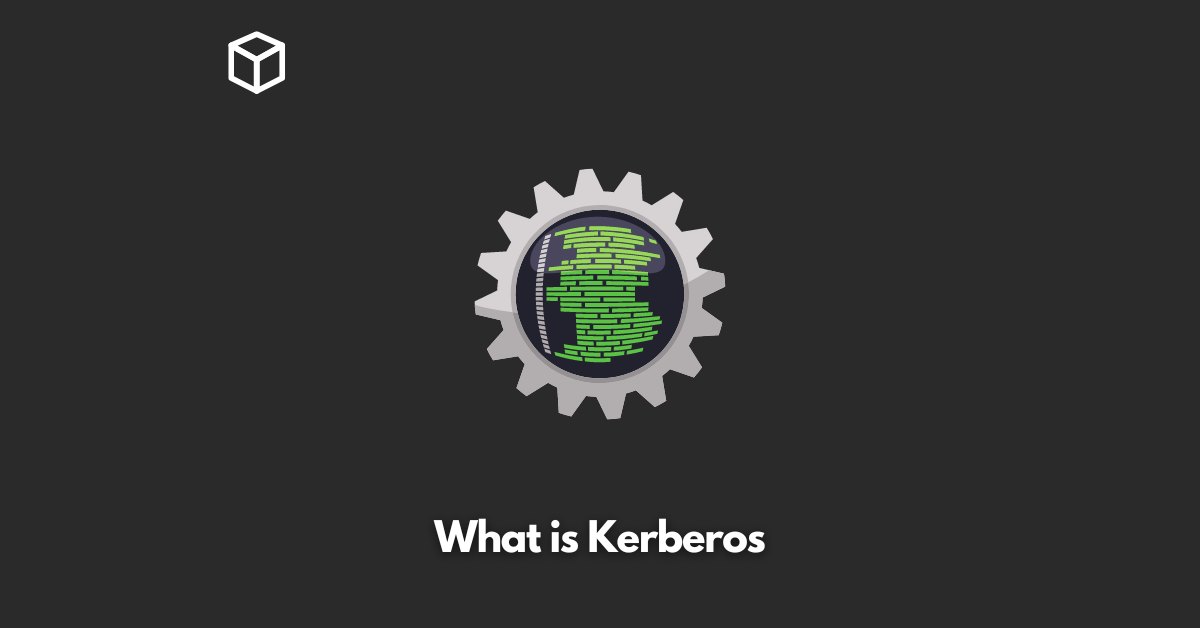Kerberos is a protocol that allows trustworthy hosts to authenticate service requests over an untrusted network, such as the internet.
It was first proposed as the “Kerberos Authentication and Authorization System” in a paper by S.P. Miller, B.C. Neuman, J.I. Schiller, and J.H. Saltzer.
The designers hoped to lay the groundwork for guaranteeing that only authorized users could get access to certain systems via an open network – the internet.
Kerberos authenticates client-server applications and verifies user identities by using secret-key cryptography and a trusted third party.
Kerberos is extensively used because it has been shown to be a secure protocol that can handle unexpected input or faults during execution.
It has strong encryption and mutual authentication, which means that both the user and the server authenticate each other’s identities. Kerberos is based on symmetric key encryption, needs a trusted third party, and may utilise public-key cryptography during some authentication processes.
Kerberos is significant because it simplifies and secures network authentication.
It guarantees that passwords are not sent over the network, are not saved in plain text, and are deleted immediately after usage. Kerberos addresses password management objectives such as password security, password storage, password transfer, and so on.
History of Kerberos
Kerberos is a network authentication technique that enables robust authentication on open, dispersed networks.
It was created in response to a well-defined and well-considered set of criteria for safe authentication in an open environment with insecure communication channels.
Kerberos has been used and researched extensively for a long period, making it a mature security solution. The protocol suits the needs of current distributed systems and has shown to be quite effective.
RFC 1510 included the first Kerberos protocol definition. RFC 4120 describes Version 5 of the Kerberos protocol, which gives an overview and definition of the protocol. RFC 4120 supersedes RFC 1510 in order to explain features of the protocol and its intended usage that need more thorough or explicit explanation than RFC 1510.
Kerberos has been utilized in a variety of applications, including DOCSIS and PacketCable, Intel AMT, and Internet of Things devices. A formal study of several Kerberos 5 features was also performed using MSR (a basic logic-oriented language intended at evaluating the decidability of security protocol analysis under a range of assumptions).
How Kerberos Works
It authenticates client-server applications and verifies user identities using secret-key cryptography and a trusted third party.
Kerberos’ three heads symbolize the client, the server, and the Key Distribution Center (KDC).
The KDC serves as a reliable third-party authentication service. Kerberos users, computers, and services rely only on the KDC, which operates as a single process that performs two functions: authentication and ticket giving.
Kerberos employs symmetric encryption and a trusted third party known as a Key Distribution Center (KDC) for authenticating.
Kerberos keeps a particular ticket for that session on the user’s system at the time of authentication.
Instead of requesting the user for a password, any Kerberos-aware service will seek for this ticket.
The following stages are involved in Kerberos Authentication: the PC Client signs in to the domain;
A Ticket-Granting Ticket (TGT) request is made to a Kerberos Key Distribution Center (KDC); the Kerberos KDC provides an encrypted TGT and session key; the TGT is encrypted using the Ticket Granting Service (TGS) secret key.
Kerberos guarantees that network resources are only accessible to authorized users. It also offers AAA security: authentication, authorization, and accounting.
Microsoft Windows presently uses it as the default authentication technique. Kerberos implementations are available in Mac OS, FreeBSD, UNIX, and Linux.
Benefits of Kerberos
Kerberos offers two services: authentication and ticket distribution (TGS).
KDC “tickets” offer mutual authentication, enabling nodes to securely establish their identity to one another.
Kerberos authentication employs traditional shared secret cryptography to prevent network messages from being read or modified.
Kerberos adds various benefits to any cybersecurity configuration.
Its benefits include powerful and various security measures, as well as password management.
Authentications are reusable and never expire; Kerberos is totally based on open Internet standards; and it is widely used, so any new flaws in its security protocol or underlying modules are swiftly addressed.
Kerberos has made the internet more secure and allows users to accomplish more work without sacrificing security.
The ability to utilize robust encryption techniques to safeguard passwords and authentication tickets is the major benefit of Kerberos.
Given enough time and money, every encryption method can be cracked with today’s technology. But, the capacity of attackers to break it does not render it obsolete.
Drawbacks of Kerberos
Kerberos has a number of disadvantages, including its complexity, single point of failure, and poor performance.
These difficulties, however, may be minimized by adhering to recommended practices for incorporating Kerberos into your application.
Moreover, when a person has too many group memberships, various authentication issues may develop.
SSO is a Kerberos alternative that enables users to sign in once and access various services without having to re-enter their credentials.
Applications of Kerberos
Kerberos is a network security protocol that authenticates service requests between two or more trustworthy hosts across an untrusted network, such as the internet.
To make it more difficult for hackers, it employs third-party ticket authorization and strong encryption. Kerberos is used in network security, single sign-on, and cloud security situations.
It streamlines and secures authentication by letting users to establish their identity once to Kerberos, which then passes a Ticket Granting Ticket (TGT) as evidence of identification to other services or computers.
Future of Kerberos
Kerberos’ future is likely to include increased security and the rise of new use cases.
Managing protocol updates, letting nodes to establish their identity, and providing robust authentication for users and client/server applications are all part of this.
Moreover, Kerberos is used to authenticate service requests sent between two or more trustworthy servers across an untrusted network.




